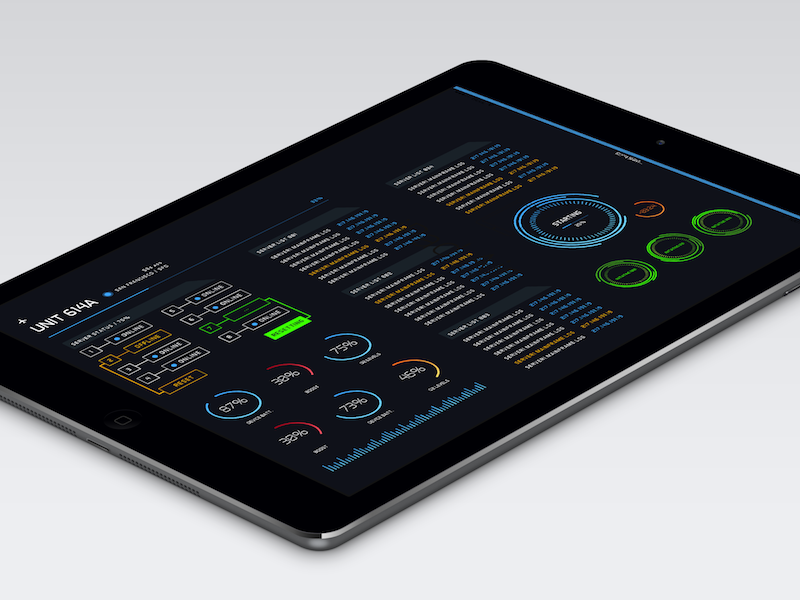In today’s fast-paced digital economy, the way we pay for goods and services is undergoing a dramatic transformation. Traditional cash and card transactions are rapidly giving way to innovative digital payment options that offer speed, security, and convenience. As technology advances, businesses and consumers alike are embracing these cutting-edge solutions to streamline transactions, reduce costs, and improve the overall payment experience. This article provides an in-depth exploration of modern digital payment options, discussing their evolution, the technologies behind them, various use cases, challenges, and future trends. Whether you are a consumer seeking convenience or a business aiming to optimize your payment processes, understanding these digital payment innovations is essential for thriving in the modern economy.

Digital payment options refer to methods of transferring money electronically without the need for physical cash. This broad category includes mobile payments, online payment gateways, cryptocurrencies, and contactless payment methods. These systems have revolutionized traditional payment processes by providing faster transaction times, improved security features, and enhanced user experiences. Over the past decade, the rapid growth of fintech companies and technological advancements have accelerated the adoption of digital payment methods across the globe.
A. The Evolution of Payment Methods
- Traditional Payment Systems:
- For many years, the exchange of cash and checks formed the backbone of economic transactions.
- Credit and debit cards emerged as a major alternative in the mid-20th century, offering convenience and safety compared to carrying cash.
- The Digital Revolution:
- The rise of the internet and mobile technology in the late 20th and early 21st centuries paved the way for online banking and digital payment platforms.
- E-commerce growth fueled the need for secure and efficient digital payment solutions.
- Fintech Disruption:
- Fintech startups have introduced innovative digital payment technologies that bypass traditional banks and offer more streamlined, user-friendly solutions.
- The integration of technologies such as artificial intelligence (AI), blockchain, and biometrics has further enhanced security and efficiency.
B. Importance of Digital Payment Options
Digital payment methods are not only a convenience but also a necessity in today’s globalized economy. They enable:
- Increased Speed: Transactions are processed in real time or near-real time, reducing waiting periods.
- Enhanced Security: Advanced encryption, tokenization, and biometric authentication minimize the risk of fraud.
- Cost Savings: Reduced transaction fees and lower operational costs compared to traditional payment systems.
- Global Reach: Digital payments enable seamless cross-border transactions, fostering international trade and commerce.
- Improved User Experience: Intuitive interfaces and mobile-first designs cater to a tech-savvy consumer base.
Types of Digital Payment Options
There is a wide array of digital payment options available today. Each method leverages different technologies and serves various purposes depending on the context of the transaction. The following sections describe the most prominent digital payment methods, organized alphabetically for clarity.
A. Mobile Wallets
Mobile wallets are digital applications that allow users to store payment information and conduct transactions using their smartphones or wearable devices. These wallets have become increasingly popular due to their ease of use and rapid adoption by both consumers and merchants.
Key Features:
A. Convenience:
- Users can make payments by simply tapping their phone at a contactless terminal.
- Mobile wallets store credit and debit card details securely, eliminating the need to carry physical cards.
B. Security:
- Mobile wallets use encryption and tokenization to protect sensitive payment information.
- Biometric authentication, such as fingerprint or facial recognition, is commonly used to authorize transactions.
C. Integration:
- Many mobile wallets integrate with loyalty programs and rewards, providing additional value to consumers.
- Popular examples include Apple Pay, Google Pay, and Samsung Pay.
D. Global Acceptance:
- Increasingly, retailers worldwide are accepting mobile wallet payments, making them a convenient option for international travel and commerce.
B. Online Payment Gateways
Online payment gateways facilitate transactions between buyers and sellers over the internet. They serve as the digital equivalent of a physical point-of-sale terminal and are essential for e-commerce businesses.
Key Features:
A. Secure Transactions:
- Payment gateways use secure sockets layer (SSL) encryption and other security protocols to ensure that transactions are safe.
- Fraud detection systems and multi-factor authentication further protect both buyers and sellers.
B. Ease of Integration:
- Many payment gateways offer APIs and plugins that allow seamless integration into websites and mobile apps.
- They support multiple currencies, making them ideal for businesses operating internationally.
C. User Experience:
- A smooth checkout process increases conversion rates and reduces cart abandonment.
- Popular online payment gateways include PayPal, Stripe, and Square.
D. Real-Time Processing:
- Transactions are processed in real time, providing immediate confirmation to both buyers and merchants.
- This efficiency is critical for maintaining trust and satisfaction in online commerce.
C. Cryptocurrencies
Cryptocurrencies are digital or virtual currencies that use cryptography for security. They operate on decentralized networks, typically powered by blockchain technology, which ensures transparency and immutability.
Key Features:
A. Decentralization:
- Cryptocurrencies are not controlled by any central authority, making them resistant to government interference and manipulation.
- This decentralization fosters a trustless environment where transactions are validated by the network itself.
B. Blockchain Technology:
- The underlying blockchain technology records transactions in a secure, transparent ledger.
- This reduces the risk of fraud and makes it difficult to alter or reverse transactions.
C. Security:
- Advanced encryption methods secure cryptocurrency transactions.
- Wallets, both hardware and software, provide additional layers of security for storing digital assets.
D. Innovation and Volatility:
- Cryptocurrencies offer a new way to think about money, enabling smart contracts and decentralized finance (DeFi) applications.
- However, their volatility can be a barrier for widespread adoption in everyday transactions.
E. Growing Acceptance:
- An increasing number of businesses and online platforms are accepting cryptocurrencies as a form of payment.
- Bitcoin, Ethereum, and other cryptocurrencies are gradually moving toward mainstream acceptance.
D. Contactless Payments
Contactless payments use radio-frequency identification (RFID) or near-field communication (NFC) technology to process transactions without physical contact. This method has gained prominence due to its speed and convenience.
Key Features:
A. Speed:
- Transactions are completed within seconds, making contactless payments ideal for high-traffic retail environments.
- This technology is particularly useful for public transportation and quick-service restaurants.
B. Convenience:
- Users simply tap or wave their card, smartphone, or wearable device at a terminal to complete a transaction.
- Reduced physical contact enhances safety and hygiene, which has become especially important during global health crises.
C. Security:
- Contactless payments incorporate encryption and limited transaction amounts to reduce the risk of fraud.
- In case of loss or theft, users can quickly report and block their cards or devices.
E. Peer-to-Peer (P2P) Payment Systems
P2P payment systems enable direct transactions between individuals without the need for intermediaries such as banks. These systems have become popular for splitting bills, paying for services, and transferring money quickly.
Key Features:
A. Speed and Efficiency:
- P2P systems facilitate near-instantaneous transfers of funds between individuals.
- This is particularly useful for everyday transactions and social payments.
B. Ease of Use:
- Mobile apps dedicated to P2P payments offer intuitive interfaces and minimal transaction steps.
- Examples include Venmo, Cash App, and Zelle.
C. Social Integration:
- Many P2P apps incorporate social features, allowing users to share transactions and leave comments.
- This fosters a sense of community and transparency in financial interactions.
F. Digital Wallets
Digital wallets are versatile platforms that allow users to store multiple payment methods, including credit cards, debit cards, and cryptocurrencies, in a single, secure digital space.
Key Features:
A. Multi-Functionality:
- Digital wallets consolidate various forms of payment, making them a one-stop solution for managing finances.
- They often include features such as loyalty cards, gift cards, and transit passes.
B. Security and Convenience:
- Strong encryption and biometric authentication provide robust security for stored payment information.
- The convenience of having all payment methods in one place simplifies transactions both online and offline.
C. Broad Acceptance:
- Many digital wallets are widely accepted by merchants worldwide.
- Their growing popularity is driving further innovations and integrations in the payment ecosystem.
G. Subscription and Recurring Payment Systems
Subscription models have revolutionized the way consumers pay for services and digital content. These systems automate recurring payments, ensuring uninterrupted access to products and services.
Key Features:
A. Predictable Revenue:
- For businesses, recurring payments provide a steady stream of revenue and facilitate long-term financial planning.
- Consumers benefit from convenience and often receive discounts for automated payments.
B. User Convenience:
- Automated billing reduces the hassle of manually processing payments each period.
- Subscription services are prevalent in industries such as streaming, software-as-a-service (SaaS), and membership programs.
H. Biometric Payment Systems
Biometric payment systems use unique biological characteristics, such as fingerprints or facial recognition, to authorize transactions. This method adds an extra layer of security by ensuring that only the authorized user can approve a payment.
Key Features:
A. Enhanced Security:
- Biometric authentication is extremely difficult to replicate, significantly reducing the risk of fraud.
- It eliminates the need for passwords, making transactions both secure and user-friendly.
B. Speed and Convenience:
- Transactions are completed quickly through simple biometric scans.
- This method enhances the user experience by simplifying the payment process.
I. Blockchain-Based Payment Platforms
Blockchain technology is not only the foundation of cryptocurrencies but also plays a crucial role in creating secure and transparent digital payment systems. These platforms harness the decentralized nature of blockchain to facilitate secure, peer-to-peer transactions.
Key Features:
A. Decentralization:
- Transactions are processed without intermediaries, reducing costs and increasing transaction speed.
- This decentralization also minimizes the risk of fraud and manipulation.
B. Transparency and Immutability:
- Every transaction is recorded on an immutable ledger, ensuring complete transparency and traceability.
- This feature is particularly important for high-value transactions and industries requiring robust audit trails.
C. Smart Contracts:
- Blockchain-based platforms can incorporate smart contracts to automate complex transactions and enforce agreements without manual intervention.
- This automation improves efficiency and reduces the potential for errors.
J. Emerging Fintech Innovations
Beyond the established methods, a host of emerging fintech innovations are poised to further revolutionize digital payments. These include innovations that combine multiple technologies to create hybrid payment solutions tailored to specific market needs.
Key Features:
A. Hybrid Payment Solutions:
- Combining traditional payment methods with blockchain, AI, and biometrics to offer secure and efficient transaction processing.
- These hybrid models aim to balance security, speed, and convenience.
B. Internet-Enabled Smart Devices:
- The proliferation of smart devices enables seamless integration of payment options across various platforms and environments.
- From smart refrigerators that automatically reorder groceries to connected cars that handle toll payments, the future of payments is increasingly interconnected.
C. Innovative Payment Models:
- Concepts such as pay-as-you-go, micro-payments, and on-demand payment systems are gaining traction, offering flexibility and reducing transaction friction.
- These models cater to emerging trends like the gig economy and subscription-based services.
Best Practices for Implementing Digital Payment Solutions
Successfully implementing digital payment options requires a strategic approach that considers technology, security, and user experience. Organizations must follow best practices to maximize benefits and mitigate risks.
A. Prioritize Security
- Data Protection:
- Implement robust encryption and tokenization to safeguard payment data.
- Regularly update security protocols and conduct audits to identify vulnerabilities.
- Fraud Prevention:
- Use machine learning algorithms to detect and prevent fraudulent transactions.
- Establish multi-factor authentication and real-time monitoring to ensure transaction integrity.
B. Enhance User Experience
- Streamlined Interfaces:
- Design user interfaces that are intuitive and easy to navigate.
- Simplify the payment process to reduce friction and improve satisfaction.
- Responsive Customer Support:
- Offer dedicated support channels to address user issues promptly.
- Provide educational resources to help users understand and adopt digital payment methods.
C. Ensure Seamless Integration
- System Compatibility:
- Ensure that digital payment solutions integrate smoothly with existing financial systems and e-commerce platforms.
- Work closely with technology providers to customize solutions that meet specific business needs.
- Regular Updates:
- Continuously update systems to incorporate the latest technological advancements and security features.
- Maintain an agile approach to adapt quickly to changing market conditions.
D. Educate and Train Users
- Employee Training:
- Conduct regular training sessions for employees to familiarize them with new digital payment tools.
- Emphasize the importance of cybersecurity and best practices for handling transactions.
- Consumer Education:
- Develop educational campaigns to inform consumers about the benefits and safe usage of digital payment options.
- Provide clear instructions and support to ensure a smooth transition to digital methods.
E. Monitor and Optimize Performance
- Analytics and Reporting:
- Use advanced analytics to track transaction performance, user behavior, and system efficiency.
- Regularly review metrics to identify areas for improvement and optimization.
- Feedback Mechanisms:
- Implement feedback systems to gather user insights and suggestions.
- Use this information to refine and enhance digital payment solutions continually.
Challenges and Solutions in Digital Payments
Despite the many advantages, digital payment systems also face several challenges that organizations must address to ensure successful implementation.
A. Security and Fraud Risks
- Challenge:
- Cybersecurity threats and fraud remain significant concerns in digital payments.
- Solution:
- Implement advanced encryption, multi-factor authentication, and real-time fraud detection systems.
- Educate users on recognizing and preventing fraudulent activities.
B. Regulatory and Compliance Issues
- Challenge:
- The regulatory landscape for digital payments is constantly evolving, posing challenges for compliance.
- Solution:
- Stay informed about local and international regulations.
- Invest in compliance software and work with legal experts to ensure adherence to regulatory standards.
C. Integration with Legacy Systems
- Challenge:
- Integrating modern digital payment solutions with legacy systems can be complex and resource-intensive.
- Solution:
- Plan for gradual integration with pilot programs and phased rollouts.
- Leverage middleware and API solutions to bridge compatibility gaps between systems.
D. User Adoption and Resistance
- Challenge:
- Some users may resist transitioning from traditional payment methods to digital options.
- Solution:
- Focus on user education and highlight the benefits of digital payments, such as convenience and security.
- Provide incentives for early adopters and ensure that interfaces are user-friendly.
E. Global and Cultural Differences
- Challenge:
- Digital payment adoption can vary significantly across different regions and cultures.
- Solution:
- Tailor digital payment solutions to meet the unique needs of different markets.
- Understand local regulations, consumer preferences, and technological infrastructure to ensure successful implementation.
Future Trends in Digital Payment Options
As technology continues to evolve, digital payment options are expected to undergo further transformations. Staying ahead of these trends is crucial for businesses and consumers alike.
A. Increased Adoption of Contactless and Mobile Payments
- Trend:
- The global trend toward contactless payments is set to continue, driven by the need for hygienic and efficient transactions.
- Implication:
- Businesses will need to invest in upgrading their payment terminals and infrastructure to support contactless transactions.
- Mobile wallets will become more advanced, integrating loyalty programs, rewards, and personalized promotions.
B. Growth of Blockchain and Cryptocurrency Payments
- Trend:
- Blockchain technology and cryptocurrencies are expected to gain further traction as secure, decentralized payment methods.
- Implication:
- Increased adoption of digital currencies could revolutionize cross-border transactions, reducing fees and processing times.
- Regulatory clarity and technological advancements will be key to unlocking the full potential of cryptocurrency payments.
C. Emergence of Biometric and Voice-Activated Payments
- Trend:
- Payment systems leveraging biometrics and voice recognition are on the rise, offering enhanced security and ease of use.
- Implication:
- These innovations will further simplify the payment process and reduce the reliance on traditional passwords and PINs.
- As technology evolves, biometric systems will become more accurate and widely adopted.
D. Integration with IoT and Smart Devices
- Trend:
- The integration of digital payments with the Internet of Things (IoT) will create a more interconnected ecosystem.
- Implication:
- Smart devices, from refrigerators to automobiles, will be able to initiate and complete transactions autonomously.
- This integration will drive innovation in areas such as automated supply chain management and seamless in-car payments.
E. Emphasis on Sustainable and Green Payments
- Trend:
- Sustainability is becoming a significant focus, with consumers and businesses alike demanding eco-friendly payment solutions.
- Implication:
- Digital payment systems will increasingly adopt sustainable practices, such as reducing paper use and energy consumption.
- Blockchain technologies with lower energy footprints will gain prominence as the demand for green payments grows.
Conclusion
Digital payment options have transformed the financial landscape by offering secure, efficient, and convenient ways to conduct transactions in a globalized economy. From mobile wallets and online payment gateways to cryptocurrencies and biometric systems, the range of digital payment methods continues to expand, driven by rapid technological advancements and shifting consumer preferences.
Organizations that embrace these cutting-edge digital payment solutions can unlock numerous benefits, including increased operational efficiency, cost savings, and improved customer experiences. Moreover, the integration of digital payment systems with emerging technologies such as AI, blockchain, and IoT promises to further revolutionize the way we manage and transfer money.
However, successful adoption requires addressing challenges such as security risks, regulatory compliance, integration with legacy systems, and ensuring equitable access for all users. By following best practices—such as prioritizing security, streamlining user experiences, providing comprehensive training, and staying informed about future trends—businesses can maximize the potential of digital payment options and remain competitive in a rapidly evolving market.
Looking forward, the future of digital payments is bright, with continuous innovations paving the way for even more seamless, secure, and sustainable transaction methods. As digital payments become an integral part of our daily lives, both consumers and businesses must work together to harness these advancements responsibly, ensuring that the benefits of this transformative technology are accessible to everyone.














